2022.10.31
“Let’s have fun with VOCALOID!” vol.2 -the singing expression with VOCALOID-
Thank you very much for reading the "Let's have fun with VOCALOID!" vol.2.
In this article, we will adjust the singing expression of VOCALOID.
You can download VOCALOID6 Free Trial Version!
Please check an article which includes explanation for Installation and Authorization of VOCALOID6 free trial version.
You can download VOCALOID Editor file(vpr format) that completed to enter the data based on this article. Click the button below.
Let's use the STYLE feature
Please open the project you created last session. And, please open the Inspector. If the Inspector is not open, press the "I" to open it.
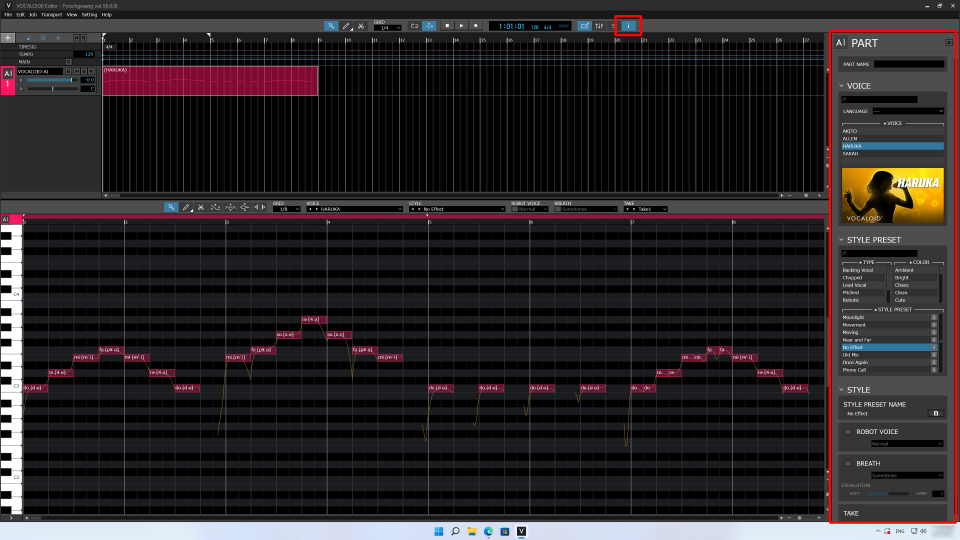
One thing to learn is a function called "STYLE PRESET."
Just select "STYLE PRESET" to change the settings of the voicebank. Let's change the singing voice of the voicebank using "STYLE PRESET".
Select the part where data is entered and check the Inspector. STYLE PRESET is shown in the middle row of the Inspector.
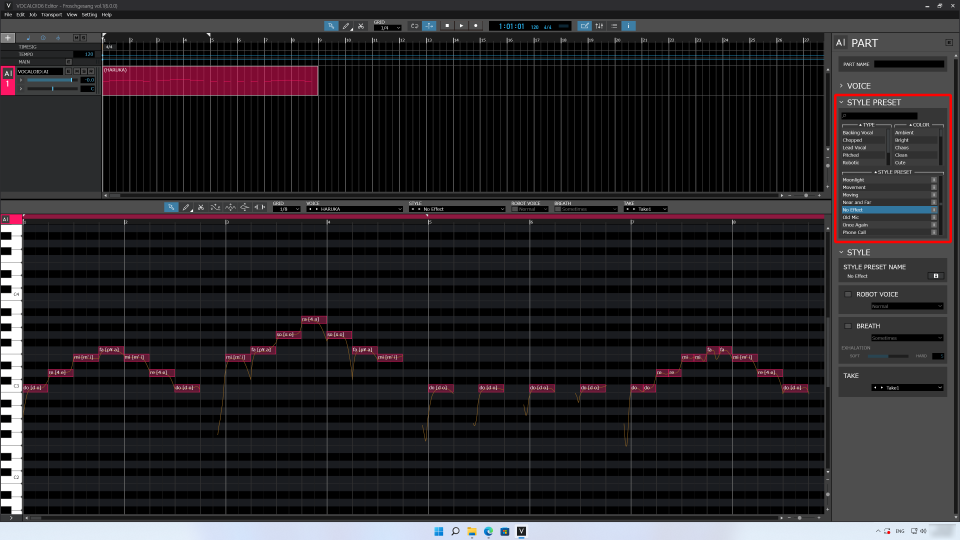
You can select a preset using the TYPE, COLOR and STYLE PRESET fields.
If you already know the desired style preset, you can select it directly from the STYLE PRESET section. If you are undecided, narrow down your choices with the TYPE and COLOR fields before making a selection.
When you choose a style preset in the Inspector, the sound will change.
Select Lead Vocal > Rich. Then select Melodic from the candidates.
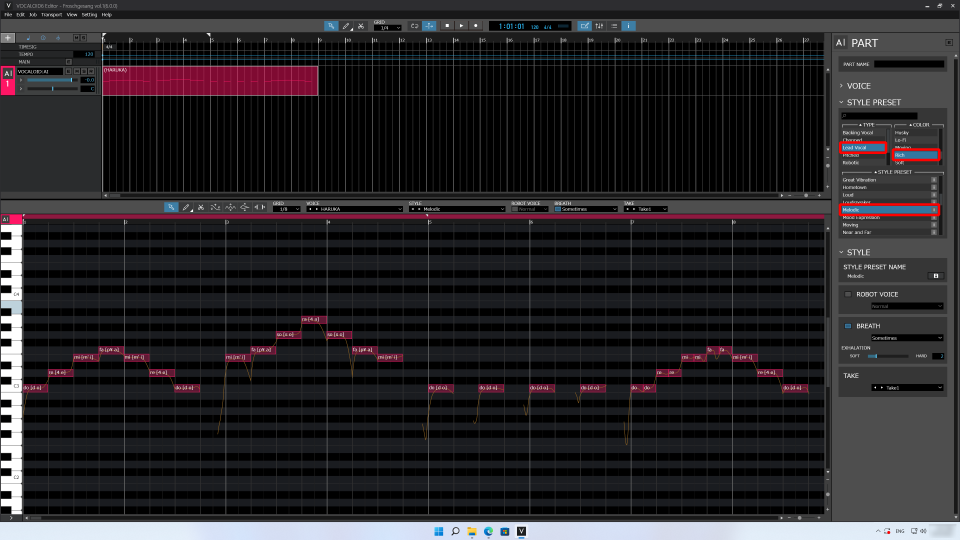
Then, VOCALOID editor performs calculations and changes the voice automatically. Let's play it.
How was that? By choosing a style preset, the singing voice can be changed.
Let's choose a different style preset.
Undo the selection with STYLE PRESET in the Inspector. Click the selected TYPE and COLOR again to deselect them.
Next, let's choose a robotic voice. Select Robotic for the TYPE, then Clean, and Short Echo as the STYLE.
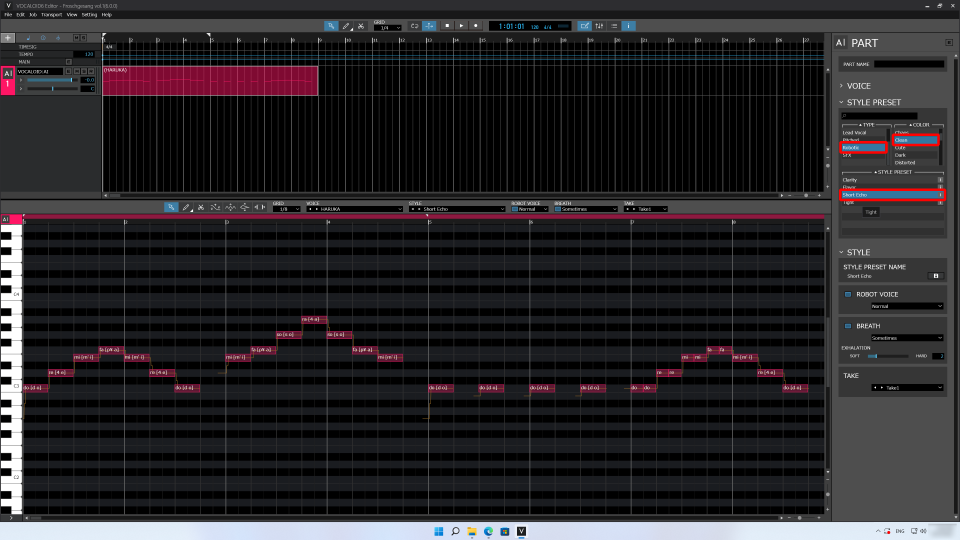
You can hear a robotic voice with the Robotic Style selected.
By using the style preset function, you can easily change the singing style and sound quality. Let's make good use of it.
I chose a robotic preset, but the character is too strong for "Chorus of Frogs," so let's return to the first Melodic preset. Please reset the STYLE PRESET by selecting Melodic again in the same way.
Pitch curves show changes in note pitches
Here is one term you should learn. Pay attention to the orange lines on the Musical Editor screen.
Each sound has an orange line. These lines are called "pitch curves."
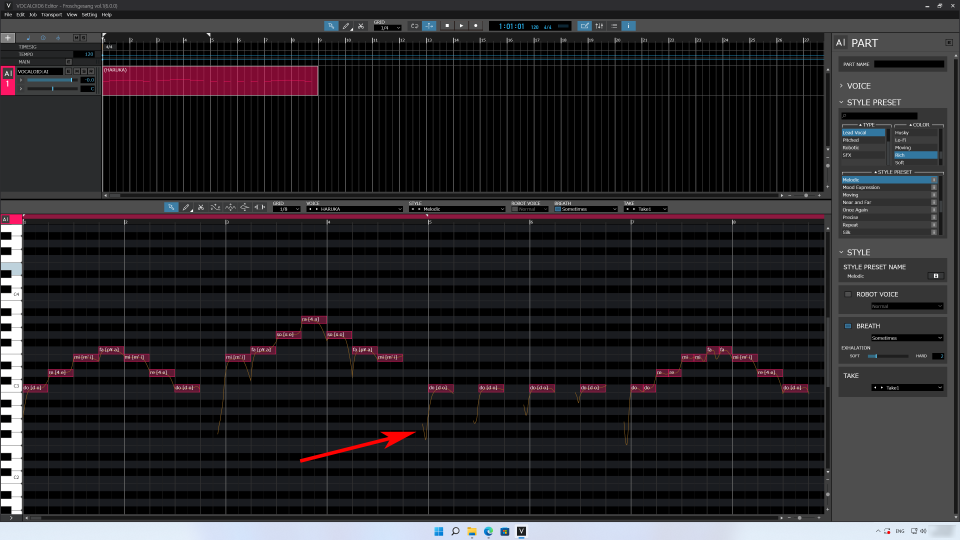
A "pitch curve" is a line written on a sound that shows how its pitch changes. The pitch curve changes quite a bit when a real person sings. VOCALOID Editor derives a pitch curve that matches the song and outputs it as sound. The pitch curve is a visual representation of the pitch change.
Let's try sliding up
I explained how to use the STYLE PRESET function to change the settings of the voicebank for an entire song or part. With VOCALOID Editor, changing the way each note is sung is also possible. Let's make adjustments to individual notes.
In singing, there is a technique called "sliding up" or "scooping" (shakuri in Japanese). In this way of singing you aim for the target note from a lower pitch. You can slide up in VOCALOID editor.
Return to the Musical Editor, and select the sound where you want to slide up. I would like slide up to the first E note of E-F-G-A-G-F-E, which is the melody after C-D-E-F-E-D-C.
Select the Arrow Tool and select the E note. Then, select the Pitch Tool. The button with the diagonal line is the Pitch Tool.
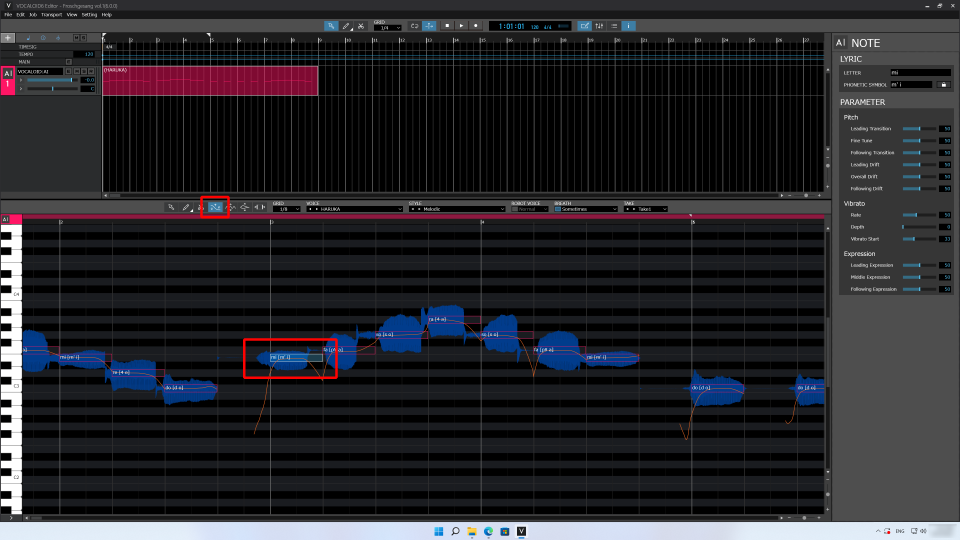
The display has changed and now shows waveforms, which are visual representations of the sounds. Six dots are also shown around the waveform.
The two dots at the front (left side) of the waveform are used to set the slide-up. They are called "Front Transition" and "Front Drift." The Drift parameter adjusts the pitch curve shift, and the Transition parameter adjusts the Drift position.
Let's set both of them to 100, the maximum value.
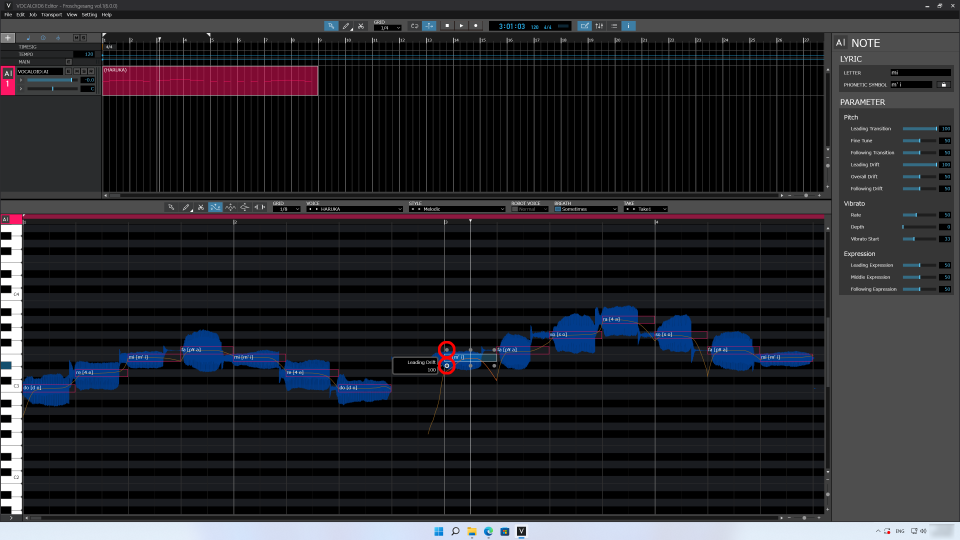
As you can see, the pitch curve of the selected note has changed. Let's play it.
As you can hear, the E note has been changed and now slides up to the pitch. What do you think? The slide-up has given expression to the song. You can add slide-ups to other sounds as you like.
Let's try adding vibrato
We entered a slide-up at the beginning of the note. Next, let's enter vibrato at the end of the note.
Vibrato is a way of singing that varies the pitch after the initial sound and adds expression. Vibrato can also be entered with VOCALOID Editor. Let's do it.
I would like to enter vibrato for the last C note in the first melody of "C-D-E-F-E-D-C." Like before, select the note of C. Then, select the Vibrato Tool. Next to the Pitch Tool is the Vibrato Tool, which has a wave image.
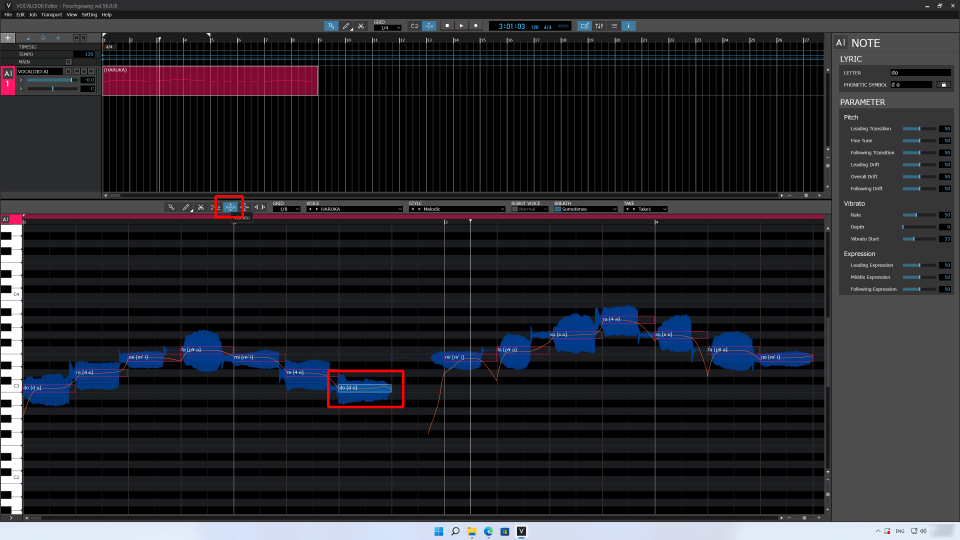
Two dots and one triangle are shown. Let's set Depth to about 60.
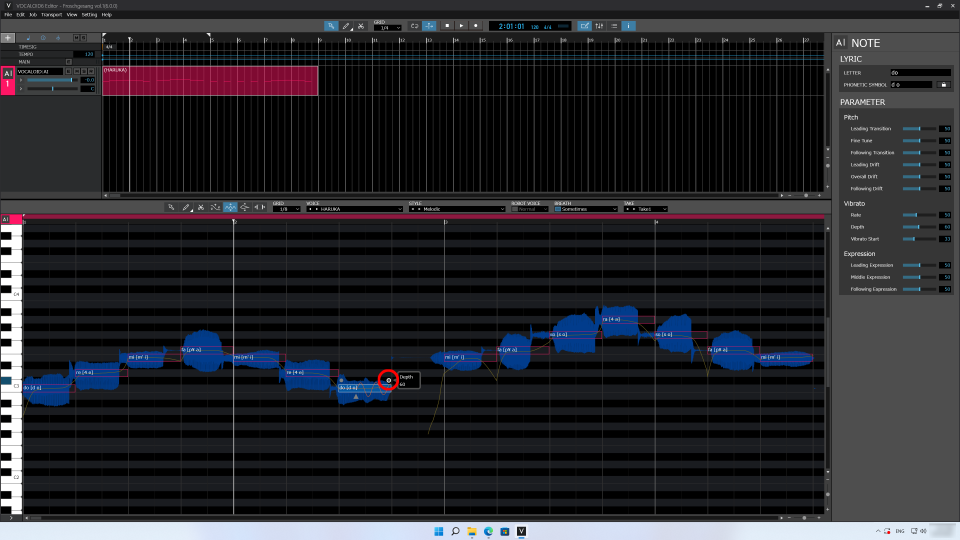
The pitch curve became like a wave, showing that vibrato was added. Let's play it.
You can hear the sound of C with vibrato.
When adding vibrato, longer notes make it clearer. Let's extend the length of the C. To change the length of a note, put the cursor at the end of the note. The cursor will then change.
If you click and drag it in this state, you can extend the length of the note.
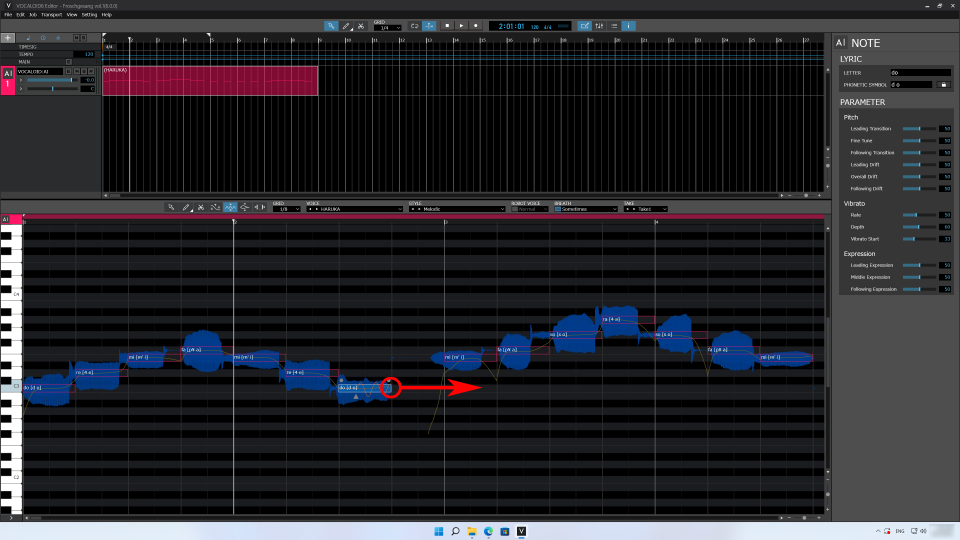
If "GRID" is "1/8", one square is the length of an eighth note. Let's play it.
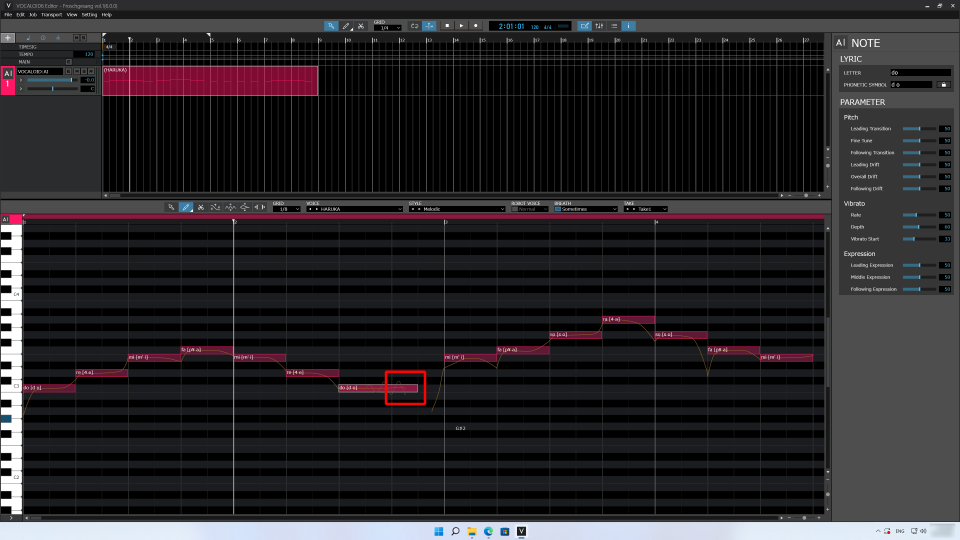
The voicebank sang with vibrato. How was it? We just adjusted Depth. Next, let's adjust Start Position. Move the triangle mark to adjust the start position of the vibrato.
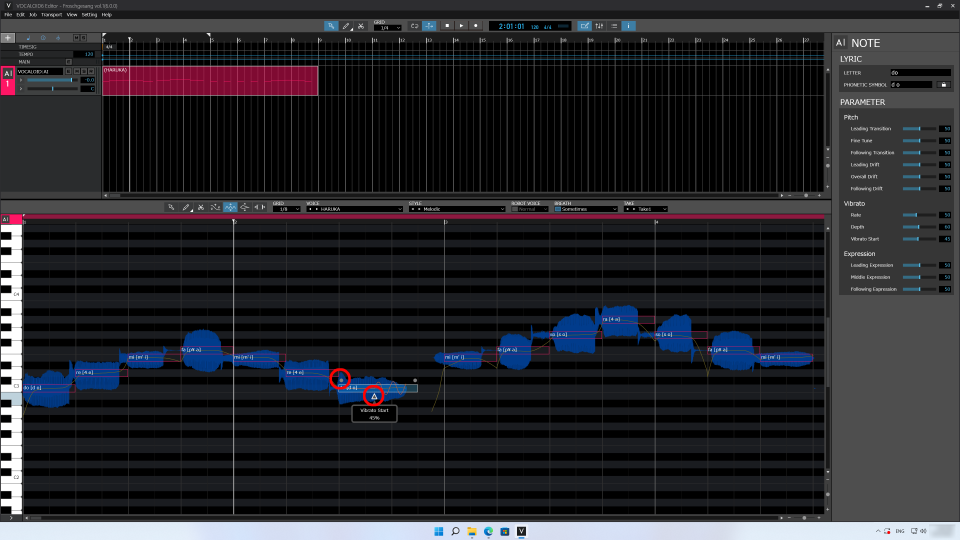
Then change rate, because vibrato sounds unnatural if it is too fast. Set Start Position to 45% and change Rate to about 25.
Add vibrato to other notes
In the same way, let's add vibrato to other parts.
Enter the vibrato for the last E note of the melody of "E-F-G-A-G-F-E" and the last C note of the last melody of "CCDDEEFFE-D-C".
Select the E and use the Vibrato Tool to change the value. Let's also extend the length of the note so that you can better hear the vibrato.
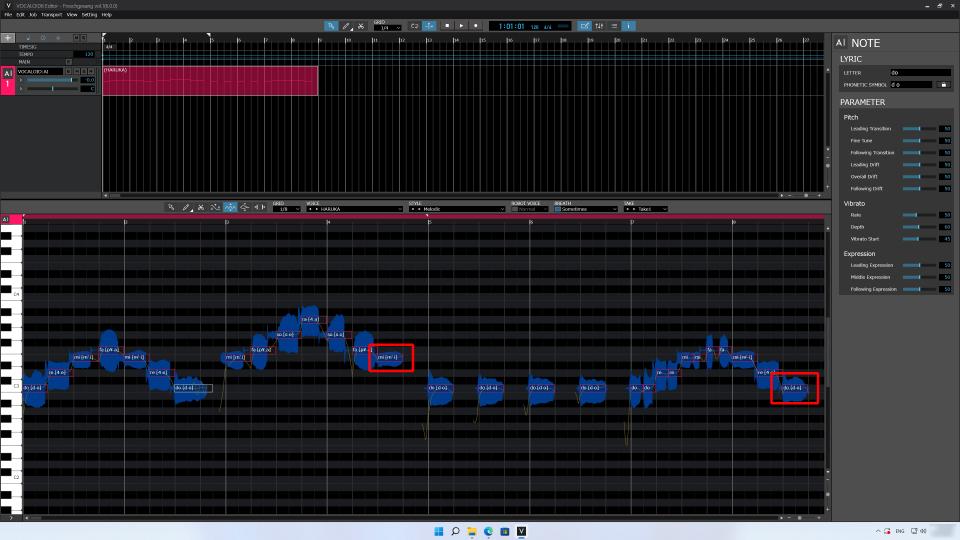
For the final C note, also extend the length and change the value with the Vibrato Tool.
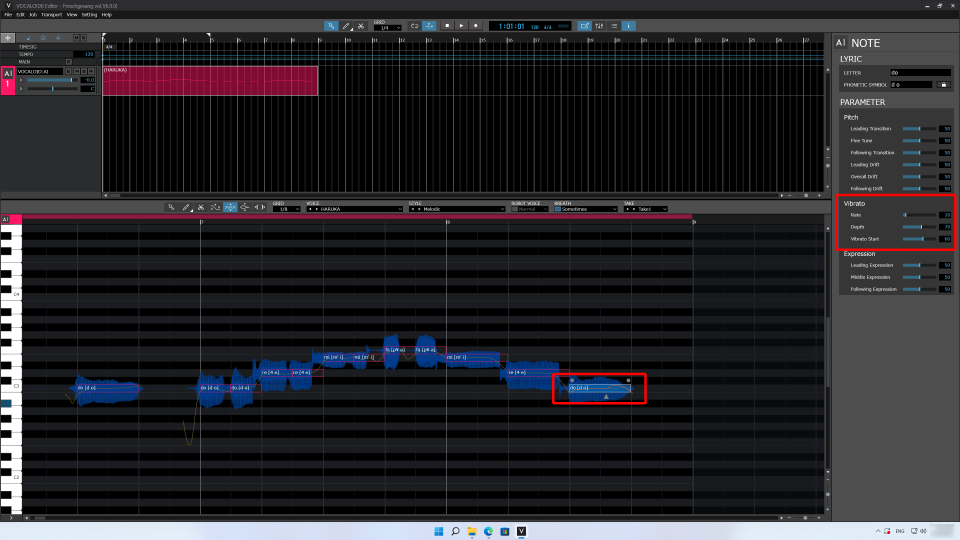
You can use the two dots and the triangle to make adjustments, or you can use the Vibrato item in the Inspector and enter the numbers directly.
For the C note, set Rate to 10, Depth to 70 and Vibrato Start to 60. Set Rate to 10, Depth to 70 and Vibrato Start to 60 in the Inspector.
We finished input, so let's play it from the beginning. It has become much more human.
Sliding up and vibrato are types of singing expression. Now that they have been added, the singing sounds much better. With VOCALOID Editor, you can change the way of singing by selecting individual notes or the entire song.
You can make the voicebank sing as if you were giving instructions to a vocalist according to your own vision. This is the fun and thrill of VOCALOID programming. We hope you will experience the joy of letting VOCALOID voice banks sing for you.
Thank you for your reading!
In the next video, we will duplicate the vocal part created in this video to create a harmony part. For humans, recording harmony parts requires a high level of singing skill.
However, with VOCALOID, anyone can experience the joy of creating harmony.
Please watch the next article. See you soon!